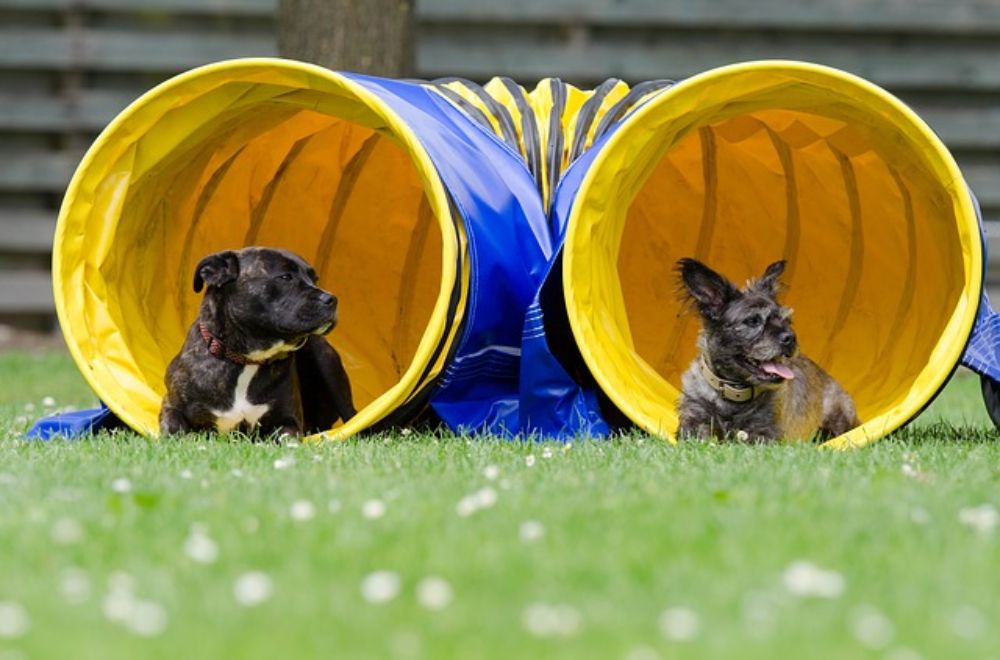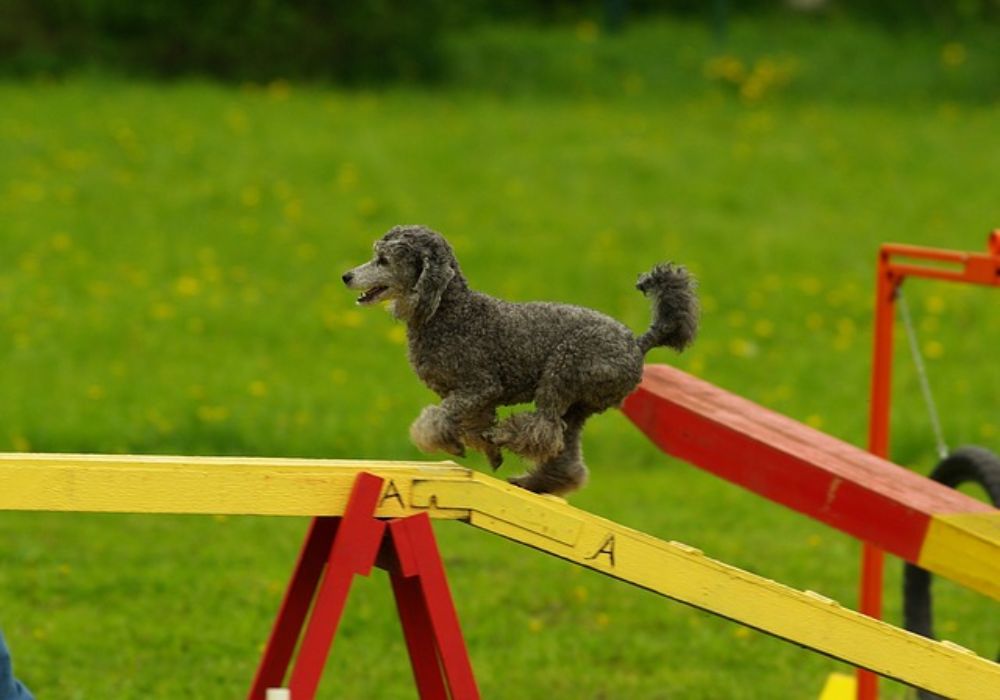Dog owners, get that whistle ready while you teach your dog the fundamentals of basic obedience. Dog agility courses aren’t just about exercise and training. If your dog has a lot of energy and can occasionally be destructive, this activity could be the perfect alternative to a dog walk. Tire them out and teach them some new tricks along the way!
Top Dog Agility Courses and Ideas

It takes patience and a whole load of practice, but you can get your favourite pooch trained up and enjoying their agility course in no time.
We know dogs can be hard work, especially when they have too much energy to know what to do with. These courses should not only tire out your fluffy friend, but also keep them mentally stimulated.
Introducing new agility obstacles will help to teach your dog to follow verbal and physical cues, getting you one step closer to becoming the perfect team!
The Fundamentals of Dog Agility Training
Before you get started with training, there are a few tips you should always keep in mind for every manoeuvre. The goal is to provide some added excitement to your pooch's day. The discipline comes as a bonus!
Be patient. By staying patient and regularly taking time to train your dog, it’ll be a more positive experience for both of you.
Motivation. Find out what motivates your pup. Do they love fuss from you when they get something right or is a treat their favourite reward? Use this when you train with them, introducing your dogs to new things, although use treats sparingly so they don’t over-eat.
Space. Ensure you have enough space for your dog to showcase their agility skill, with plenty of extra room in case they fall or overshoot a jump.
Consistency. Similar to when clicker training your dog, consistency is key. Throughout your training, pick certain hand gestures or commands and stick to them. By staying consistent your dog will pick up on these new moves quickly.
Safety. Agility courses aren't recommended for puppies. If you're waiting for your pup to grow, now is the best time for obedience training, getting them ready for agility classes in no time!
Creating Agility Obstacles for Dogs at Home

Full dog obstacle courses look pretty impressive, but you too can create your own versions at home. With a few tools and a pinch of creativity, you could create your own agility equipment... Or you could buy some off Amazon. Sizes depend on the different breeds of dog, so adjust accordingly! You don't want your Border Collie getting stuck in the tire jump after all.
Create your own dog agility course at home with this quick guide. Put them to the test and bring along friends and family, allowing them to showcase their new learned skills.
With these short tips, you and your dog could be competing in no time.
- Jumping obstacles: This one is an easy DIY obstacle. If you’ve got a spare curtain rod, PVC pipe from a plumbing project or even just a stick, just place it on top of two boxes and you’re good to go. Just keep in mind that everything should be collapsible, so they won’t get hurt if they lose their nerve at the last moment.
- Tunnel obstacle: These are easy to pick up from a toy shop and are relatively cheap too. If you have young children, you may even have one lying around you can use with your dog.
- Weaving poles obstacle: Pick up some small football cones from your local toy shop. These should be lightweight, just in case your dog runs into them as he’s learning to weave.
Tips to Get Your Dog Through an Agility Course
Introduce your dog to agility-specific equipment gradually and positively. Start with low jumps, tunnels, and weave poles, and use treats and praise to encourage your dog to engage with each obstacle. It's important to take things slow and ensure that your dog feels comfortable and confident as they navigate each new challenge.
As your dog becomes more familiar with the equipment, begin to incorporate basic agility sequences, combining different obstacles in a cohesive manner. Use verbal cues and hand signals to guide your dog through the course, and be sure to celebrate their successes with plenty of praise and rewards.
Jumping obstacles: Start low and easy so your dog can get used to the equipment and start to enjoy jumping over it. If they’re a little cautious to start with, use treats or attention as motivation to help them feel comfortable. When they’re happy jumping over a low bar, gradually start to raise the bar and build them up.
Tunnel obstacle: Some dogs may be cautious when starting with a tunnel for the first time, others may dive right in. If they need a little encouragement, a great way to start them off is to go through the tunnel yourself and call them after you.
Weaving poles obstacle: Begin slowly, with the cones further apart and walk your dog through them, encouraging them to follow you as you go. As they get used to the movement and what you expect from them, they’ll start to move more quickly through the obstacle. Be sure to congratulate your dog as you go, letting them know the star that they are!
Consistency and patience are key throughout the training process. Practice regularly and aim for short, focused training sessions to keep your dog engaged and motivated. Remember to keep things fun and light-hearted, using play and positive reinforcement to foster a love for agility training.
Training a dog for a dog agility course can be an incredibly rewarding experience for both you and your furry friend. So we hope our key steps can help you prepare your pup for an agility challenge. First and foremost remember, it's always important to have a strong foundation of basic obedience commands such as sit, stay, come, and heel. These commands form the building blocks for more advanced agility training and will be essential for guiding your dog through the course.
With dedication, encouragement, and plenty of practice, you and your dog can work together to conquer the agility course and enjoy a fulfilling, active partnership.
Everypaw Dog Insurance
Everypaw's Dog Insurance comes with 24/7 unlimited access to vets and vet nurses that can help with your pet's health, care, nutrition and behaviour. So you can rest assured your pup will be well looked after.